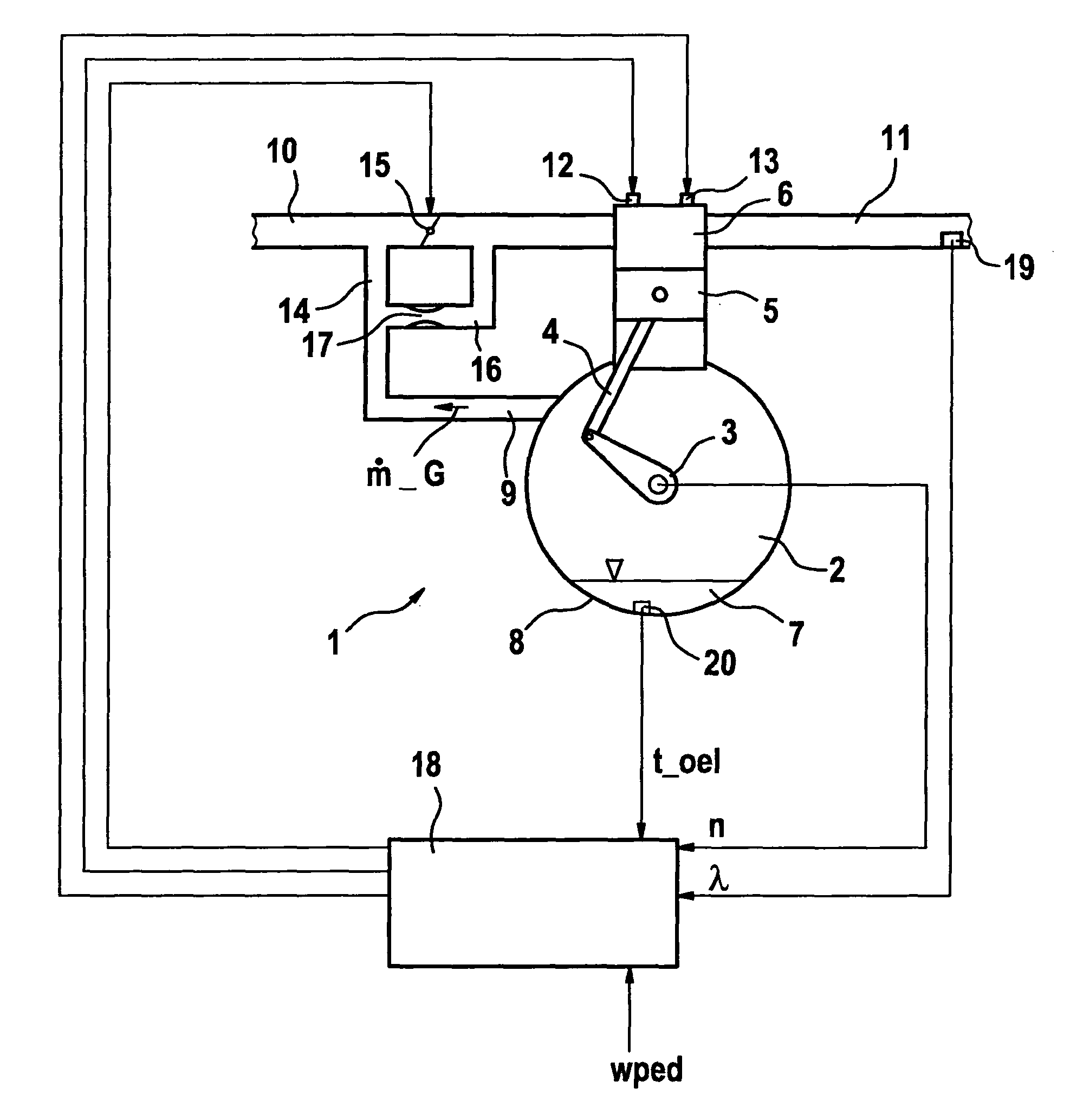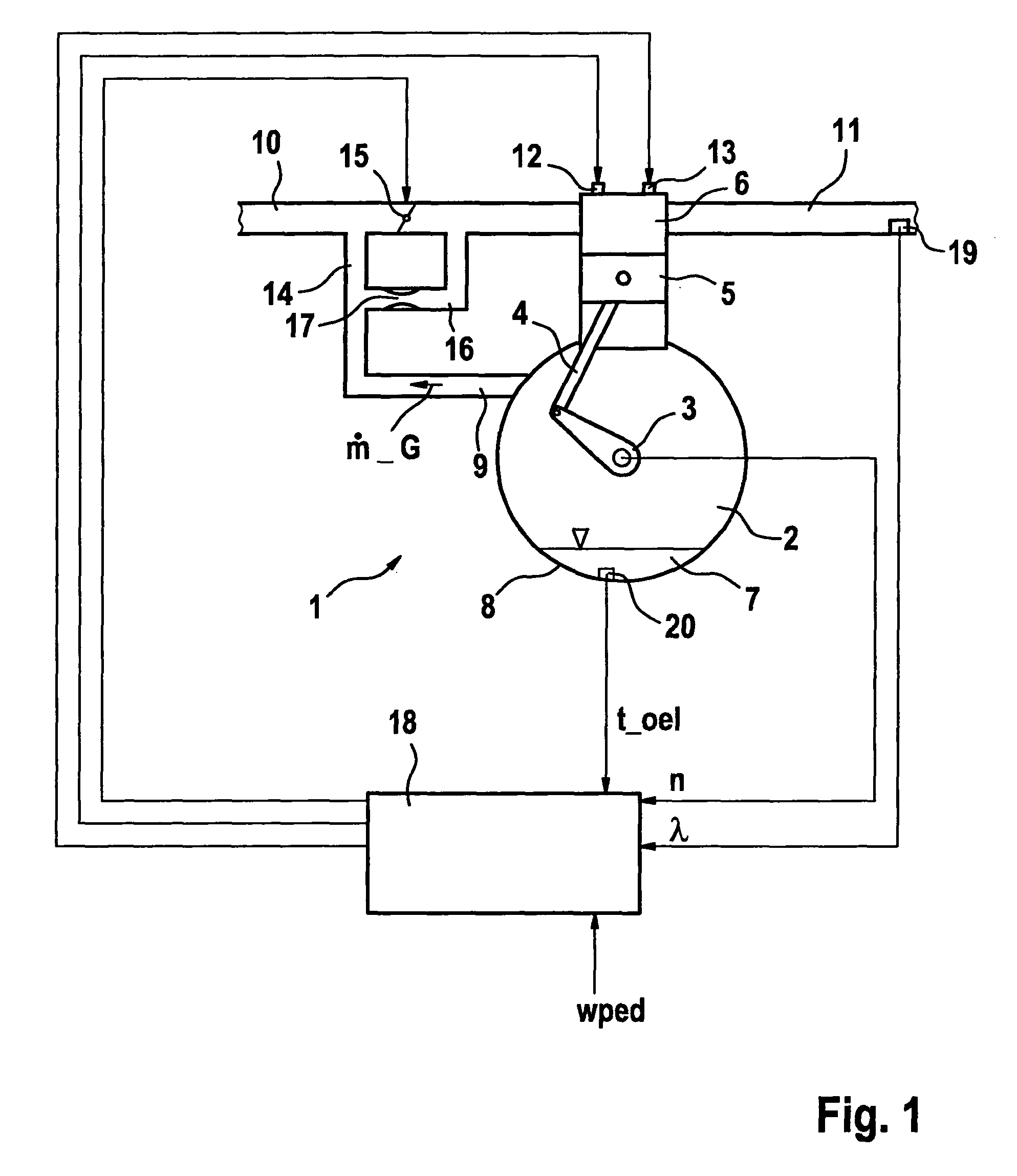Method for operating an internal combustion engine
a technology of internal combustion engine and combustion engine, which is applied in the direction of combustion engine, crankcase ventillation, electric control, etc., can solve the problem of further increasing fuel consumption and other problems
- Summary
- Abstract
- Description
- Claims
- Application Information
AI Technical Summary
Benefits of technology
Problems solved by technology
Method used
Image
Examples
Embodiment Construction
[0022]FIG. 1 is a sketch of an internal combustion engine 1 having a crankcase 2 in which a crankshaft 3 is disposed. Crankshaft 3 is connected via a connecting rod 4 to a piston 5 that is disposed movably back and forth on cylinder 6. For simplicity's sake, only one cylinder of the internal combustion engine is depicted here; the internal combustion engine usually possesses several, for example four or six, cylinders. Present in crankcase 2 is engine oil 7 that is delivered, via conduits and pumps not depicted here, to the respective lubrication points, among others the running surface of piston 5 in cylinder 6. The engine oil collects in an oil sump 8. In order to dissipate excess pressure in crankcase 2, the latter is connected via a vent 9 to intake section 10 of the internal combustion engine. Ambient air is aspirated in known fashion via intake section 10 into cylinder 6, and combustion gases are discharged back into the environment via a schematically depicted exhaust system ...
PUM
 Login to View More
Login to View More Abstract
Description
Claims
Application Information
 Login to View More
Login to View More - R&D
- Intellectual Property
- Life Sciences
- Materials
- Tech Scout
- Unparalleled Data Quality
- Higher Quality Content
- 60% Fewer Hallucinations
Browse by: Latest US Patents, China's latest patents, Technical Efficacy Thesaurus, Application Domain, Technology Topic, Popular Technical Reports.
© 2025 PatSnap. All rights reserved.Legal|Privacy policy|Modern Slavery Act Transparency Statement|Sitemap|About US| Contact US: help@patsnap.com



